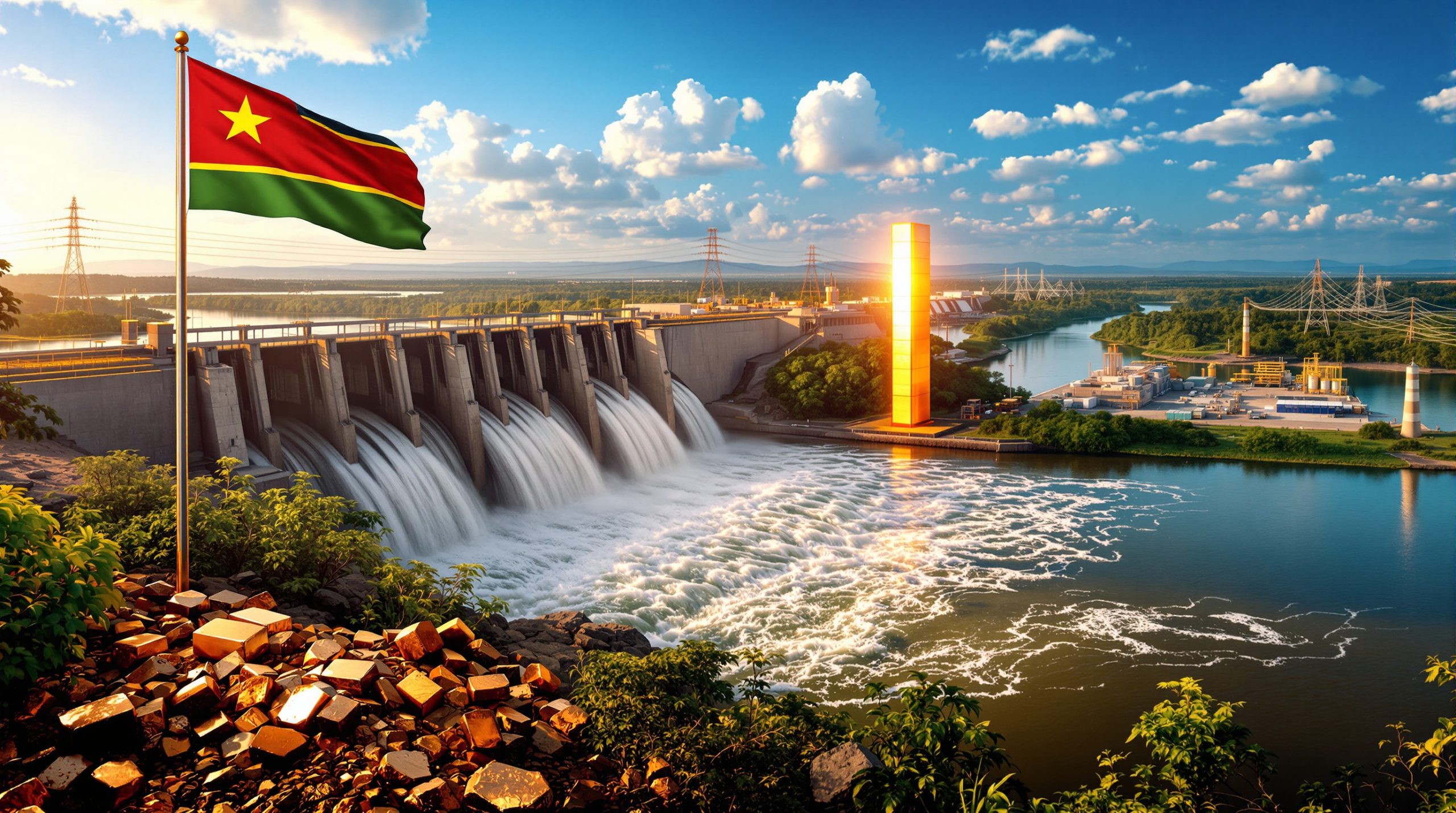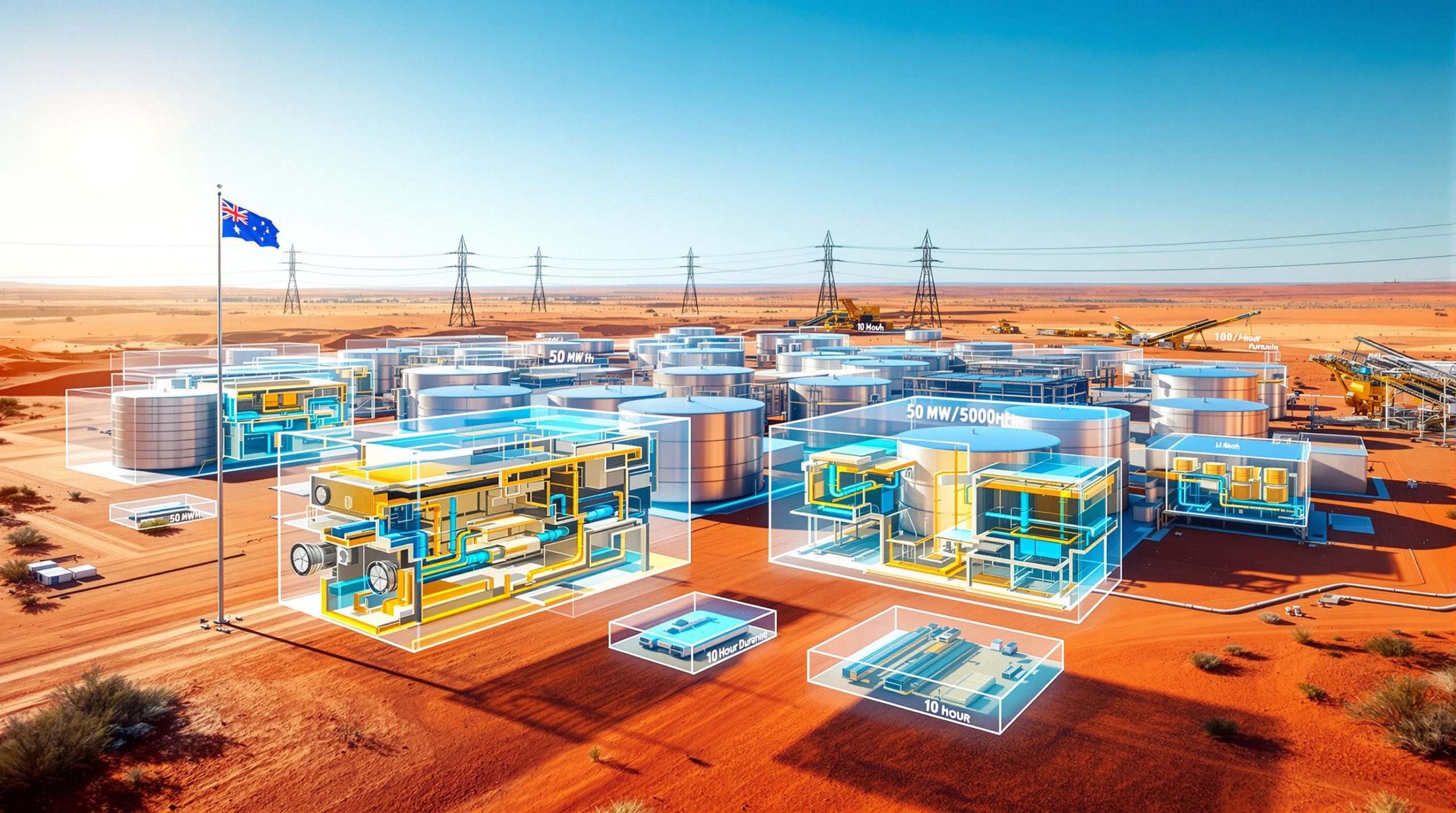Technical Specifications and Capacity Restoration
The 178-megawatt Turbine #5 restoration at the Inga II hydroelectric facility represents a significant milestone in Democratic Republic of Congo's industrial energy infrastructure development. Furthermore, this refurbishment project, completed in Q3 2025, demonstrates how targeted equipment replacement can rapidly restore generating capacity from existing hydroelectric installations.
Installation of replacement mechanical and electrical equipment concluded in the third quarter of 2025, followed by synchronization and energization processes in early Q4 2025. The restored turbine achieved full operational capacity, delivering approximately 180 MW of hydroelectric power into the DRC national grid by November 2025.
Power delivery to the Kamoa-Kakula Copper Complex follows a carefully structured progression:
- Initial delivery: 50 MW (November 2025)
- Phase 2 expansion: 100 MW target (Q1 2026)
- Full capacity delivery: 150 MW (H1 2027)
- Grid synchronization: Completed early Q4 2025
This phased approach reflects grid infrastructure limitations rather than generation capacity constraints, highlighting the critical importance of transmission system investments in enabling industrial-scale power delivery. In addition, this demonstrates how green iron project sustainability initiatives are increasingly integrated into major infrastructure developments.
Progressive Scaling and Grid Integration
The current power delivery capacity of 50 MW from Turbine #5 brings Kamoa-Kakula's total domestically sourced power to approximately 110 MW as of November 2025. This baseline represents entirely renewable, grid-supplied hydroelectric power, positioning the operation as a model for sustainable mining practices in Sub-Saharan Africa.
Expected progression to 100 MW delivery in Q1 2026 depends on completion of static compensator installation at the Kolwezi substation, while the final 150 MW capacity requires comprehensive filter bank upgrades across both Inga and Kolwezi facilities. By end-2027, total domestically sourced renewable grid power is projected to reach 210 MW, representing a 90.9% increase over the 24-month period.
Infrastructure Investment and Grid Modernization Requirements
Grid modernization initiatives focus primarily on voltage stability improvements and reactive power compensation across two critical substations. The Inga substation (SCI) serves as the primary transmission point from the hydroelectric facility, while the Kolwezi substation (SCK) manages power distribution to the Kamoa-Kakula complex.
Resistor bank installations completed at the Inga substation in May 2025 provide fundamental voltage stability improvements for long-distance transmission. Corresponding resistor upgrades at the Kolwezi substation, with completion expected imminently, enhance voltage regulation for sensitive mining equipment operations.
| Infrastructure Component | Location | Completion Timeline | Technical Function |
|---|---|---|---|
| Resistor Banks Phase 1 | Inga Substation (SCI) | Completed May 2025 | Voltage stability at source |
| Resistor Bank Upgrades | Kolwezi Substation (SCK) | Q4 2025/Q1 2026 | Mining facility voltage regulation |
| Static Compensator | Kolwezi Substation (SCK) | Early Q1 2026 | Reactive power compensation |
| Filter Bank Upgrades | Both SCI and SCK | 18-month phased program | Power quality optimization |
Advanced Power Quality Management Systems
The static compensator scheduled for installation at Kolwezi substation in early Q1 2026 represents advanced reactive power compensation technology. This system enables dynamic voltage support, improving transmission capacity and power quality for industrial loads requiring precise electrical parameters.
Filter bank upgrade phases spanning 18 months demonstrate systematic approach to power quality enhancement. These installations provide harmonic mitigation and frequency stability, essential for continuous copper extraction and processing operations that cannot tolerate power interruptions or quality variations.
Critical Infrastructure Insight: The staged implementation prevents wholesale grid disruption while systematically increasing transmission capacity, reflecting sophisticated risk management in critical industrial infrastructure development.
Power Security for Large-Scale Copper Operations
Large-scale copper mining operations require uninterrupted power supply to maintain continuous processing cycles, with any significant interruption potentially resulting in substantial operational disruptions and financial losses. The transition from 110 MW to 210 MW renewable grid power represents a fundamental shift in operational energy architecture for the Kamoa-Kakula facility.
Current domestic power supply reaching 110 MW total capacity provides baseline energy security, while the projected 210 MW by end-2027 offers substantial expansion capacity for increased mining throughput and processing optimization. This doubling of available power enables operational scaling without proportional increases in energy infrastructure risk.
Energy Cost Structure and Operational Advantages
Hydroelectric power from the Inga II facility provides significant cost advantages compared to diesel-powered alternatives commonly used in remote mining operations. Grid-supplied hydroelectric power eliminates fuel transportation logistics, reduces exposure to petroleum price volatility, and provides more predictable long-term operating cost structures.
Operational reliability improvements from grid-connected hydroelectric power include:
- Elimination of diesel fuel supply chain vulnerabilities
- Reduced maintenance requirements compared to diesel generation
- Improved power quality for sensitive extraction equipment
- Enhanced operational planning certainty through stable energy costs
- Reduced carbon footprint supporting sustainability reporting requirements
The 100% renewable energy composition of the power supply enables enhanced environmental compliance and supports global copper market preferences for sustainably produced materials, potentially commanding premium pricing in international markets. This aligns with broader energy transition strategy developments across the mining sector.
Regional Economic Development Implications
The Inga II Turbine #5 refurbishment creates broader economic development implications beyond direct mining operations. Available grid power capacity exceeding immediate Kamoa-Kakula requirements suggests potential for additional industrial development within the Kolwezi region, contingent on transmission infrastructure capacity.
Regional competitiveness benefits include improved energy security for existing operations and enhanced investment attractiveness for new mining projects considering Democratic Republic of Congo as an operational base. Reliable, cost-effective power supply represents a fundamental requirement for mining industry evolution in Sub-Saharan Africa.
| Development Phase | Available Power | Utilization Capacity | Regional Impact |
|---|---|---|---|
| Phase 1 (Q4 2025) | 50 MW delivered | Initial operations expansion | Baseline improvement |
| Phase 2 (Q1 2026) | 100 MW capacity | Enhanced operational throughput | Regional competitiveness |
| Phase 3 (H1 2027) | 150 MW maximum | Full capacity utilization | Industrial development catalyst |
Infrastructure Development Multiplier Effects
Grid infrastructure investments create positive externalities extending beyond primary beneficiaries. Substation upgrades and transmission capacity improvements potentially benefit additional industrial users within the service area, while technical expertise developed during modernization projects contributes to regional infrastructure development capabilities.
The successful completion of complex power system upgrades demonstrates technical competency and project management capabilities that may attract additional infrastructure investment to the region, creating cumulative economic development benefits over extended time horizons.
Congo River Hydropower Potential Assessment
The Congo River system possesses substantial untapped hydroelectric potential, with the Inga complex representing only a fraction of theoretically available generating capacity. Conservative estimates suggest the broader Inga site could eventually support 42,000 MW of installed capacity, positioning it among the world's largest potential hydroelectric developments.
Current operational capacity at the Inga complex remains significantly below theoretical potential, with aging infrastructure and limited transmission capacity constraining full utilization of available water resources. The Turbine #5 refurbishment demonstrates how systematic modernization can restore capacity more rapidly and cost-effectively than new construction alternatives.
Comparative Regional Development Context
Hydroelectric development across Sub-Saharan Africa faces similar challenges of aging infrastructure, limited transmission capacity, and substantial capital requirements for modernization. The Inga II approach of refurbishing existing turbines rather than constructing new facilities offers a replicable model for accelerated capacity restoration.
Strategic advantages of refurbishment over new construction include:
- Faster deployment timelines (6-12 months versus 5-10 years)
- Utilization of existing dam and water management infrastructure
- Reduced environmental impact and regulatory approval requirements
- Lower capital expenditure compared to greenfield development
- Proven water availability and flow characteristics
Regional energy security benefits extend beyond national borders, as increased DRC hydroelectric capacity could eventually support power exports to neighboring countries facing similar energy supply constraints. This development could bolster critical minerals partnership initiatives across the region.
Mining Industry Energy Transition Dynamics
The global mining industry faces increasing pressure to transition from fossil fuel-based energy sources to renewable alternatives, driven by environmental regulations, sustainability reporting requirements, and cost optimization objectives. The Ivanhoe Mines hydropower ramp-up at Inga II exemplifies this broader industrial transformation.
Traditional mining operations in remote locations often rely on diesel generators for primary power, creating vulnerability to fuel price volatility and supply chain disruptions. Grid-connected renewable energy sources provide operational stability and cost predictability essential for long-term mining project viability.
Capital Investment Patterns and Financial Optimization
Infrastructure investments in transmission and distribution systems require substantial upfront capital expenditure but provide long-term operational cost advantages. The 18-month filter bank upgrade program demonstrates how phased investment approaches can manage cash flow requirements while progressively improving operational capabilities.
Competitive advantages in global copper markets derived from renewable energy utilization include:
- Reduced operational costs through stable energy pricing
- Enhanced sustainability credentials for international marketing
- Compliance with environmental regulations and reporting standards
- Reduced exposure to petroleum price volatility
- Improved operational predictability for financial planning
Environmental compliance benefits become increasingly important as global copper consumers prioritize sustainably produced materials, potentially supporting premium pricing for renewable energy-powered mining operations. This trend reflects the broader sustainability transformation occurring across the mining sector.
Technical Infrastructure Requirements for Industrial Scale-Up
Voltage stability systems represent critical components enabling reliable power transmission across long distances from hydroelectric facilities to industrial consumers. The sequential implementation of resistor banks, static compensators, and filter bank upgrades demonstrates comprehensive approach to power quality management.
Power quality management requires sophisticated technical solutions addressing:
- Harmonic distortion mitigation through filter bank installations
- Reactive power compensation via static compensator technology
- Voltage regulation across varying load conditions
- Load balancing capabilities for variable industrial demand patterns
- Backup systems and redundancy planning for critical operations
Transmission line capacity optimization involves both equipment upgrades and operational management systems enabling dynamic response to changing power demand patterns from mining operations. Furthermore, these technical requirements align with global standards set by the International Hydropower Association for sustainable hydropower development.
Load Balancing and Distribution Network Optimization
Mining operations create variable power demand patterns based on extraction schedules, processing requirements, and equipment maintenance cycles. Grid infrastructure must accommodate these fluctuations while maintaining voltage stability and power quality standards.
The progressive scaling from 50 MW to 150 MW delivery capacity allows operational experience to inform subsequent phases, reducing technical risk and optimizing system performance before full capacity implementation.
Technical risk mitigation strategies include:
- Phased capacity increases allowing system optimization
- Redundancy planning for critical transmission components
- Real-time monitoring and control systems for rapid response
- Preventive maintenance schedules minimizing unplanned outages
- Emergency response procedures for system failures
Investment Timeline and Phased Implementation Strategy
The Ivanhoe Mines hydropower ramp-up timeline demonstrates systematic approach to complex infrastructure development, balancing technical requirements with operational continuity needs. Completion of Turbine #5 mechanical and electrical equipment installation in Q3 2025 enabled synchronization and energization in early Q4 2025.
Implementation phases reflect infrastructure constraints rather than arbitrary scheduling:
- Foundation Phase (May 2025): Resistor bank installation at Inga substation
- Expansion Phase (Q4 2025/Q1 2026): Kolwezi substation resistor upgrades
- Optimization Phase (Early Q1 2026): Static compensator deployment
- Completion Phase (18 months): Filter bank upgrades across both facilities
This staging approach minimizes operational risk while systematically addressing technical limitations preventing full power delivery to industrial consumers.
Risk Management Through Sequential Development
Phased implementation enables identification and resolution of technical issues before full system deployment, reducing overall project risk and optimizing final system performance. Each phase provides operational experience informing subsequent development stages.
Strategic Implementation Principle: Sequential capacity increases allow grid infrastructure adaptation and optimization, preventing system overload while building operational confidence in expanded power delivery capabilities.
The 18-month filter bank upgrade program spanning both SCI and SCK substations indicates comprehensive power quality enhancement rather than simple capacity expansion, suggesting sophisticated technical requirements for optimal industrial power delivery.
Energy Cost Structure Improvements and Financial Impact
Hydroelectric power provides fundamental cost structure advantages compared to diesel generation commonly used in remote mining operations. While specific cost comparisons are not publicly disclosed, industry analysis indicates substantial operational expense reduction potential through grid-connected renewable energy utilization.
Long-term financial benefits of the hydroelectric transition include:
- Elimination of diesel fuel procurement and transportation costs
- Reduced maintenance requirements for power generation equipment
- Stable energy pricing independent of petroleum market volatility
- Operational cost predictability supporting financial planning accuracy
- Potential carbon credit revenue from renewable energy utilization
Return on Infrastructure Investment Analysis
Infrastructure investments in transmission and distribution systems generate returns through operational cost reduction, improved reliability, and enhanced production capacity. The progression from 110 MW to 210 MW domestic power supply enables substantial operational expansion without proportional infrastructure investment increases.
Investment efficiency metrics suggest favorable returns:
- 90.9% power capacity increase over 24-month implementation period
- Progressive scaling reducing technical and financial risk
- Utilization of existing generating capacity through grid optimization
- Shared infrastructure costs across multiple industrial users
Power purchase agreement structures typically provide long-term cost certainty beneficial for mining operations requiring predictable expense planning for extended project lifecycles. However, these agreements must account for evolving renewable energy market dynamics as the sector continues to mature.
Strategic Positioning for Future Mining Projects
Available power capacity exceeding current Kamoa-Kakula requirements creates opportunities for additional mining development within the regional grid service area. The 210 MW projected capacity by end-2027 suggests substantial remaining availability for new industrial users.
Regional competitiveness improvements include enhanced energy security, cost-effective power supply, and reduced operational complexity for mining companies evaluating Democratic Republic of Congo investment opportunities. Reliable grid infrastructure represents fundamental prerequisite for mining industry expansion.
Grid Connection Feasibility and Development Potential
Transmission infrastructure investments create capacity for multiple industrial users, distributing infrastructure costs and improving overall system economics. Additional mining projects within reasonable transmission distance could benefit from existing grid improvements without duplicate infrastructure investment.
Development advantages for future projects include:
- Proven grid stability and power quality performance
- Established transmission infrastructure reducing development timelines
- Demonstrated technical competency in complex power system management
- Regulatory framework precedents for industrial power supply agreements
Infrastructure readiness supports accelerated development timelines for mining projects, reducing pre-production capital requirements and enabling faster revenue generation.
Technical Restoration Versus New Construction Economics
The Inga II Turbine #5 refurbishment demonstrates significant advantages of infrastructure restoration compared to greenfield hydroelectric development. Equipment replacement completed in Q3 2025 with operational capacity achieved by Q4 2025 represents remarkably fast deployment compared to new construction alternatives.
Refurbishment advantages over new development include:
- Utilization of existing dam infrastructure and water management systems
- Proven water flow characteristics and seasonal availability patterns
- Reduced environmental impact assessment and regulatory approval requirements
- Established transmission corridor access and substation infrastructure
- Known operational performance characteristics versus untested new designs
Timeline and Cost Efficiency Comparison
New hydroelectric construction typically requires 5-10 years for completion, while turbine refurbishment can achieve operational status within 6-12 months of project initiation. This timeline advantage provides critical benefits for mining operations requiring rapid power capacity expansion.
Risk mitigation benefits of restoration projects include:
- Established water rights and regulatory permissions
- Known environmental conditions and impact mitigation requirements
- Existing access infrastructure reducing construction complexity
- Proven technology performance in specific site conditions
- Established maintenance and operational procedures
The 180 MW current generation capacity from the refurbished turbine demonstrates successful restoration achieving full design specifications, validating the technical approach for similar projects across the region.
Forward-Looking Industry Implications
The Ivanhoe Mines hydropower ramp-up at Inga II establishes precedent for mining industry energy transition toward renewable sources, demonstrating practical implementation of sustainable mining operations in challenging infrastructure environments. This model offers replication potential across similar mining jurisdictions facing energy supply constraints.
Industry transformation implications include:
- DRC positioning in global copper supply chain competitiveness through cost-effective renewable energy
- Energy cost advantages driving mining sector expansion and operational optimization
- Infrastructure development precedents applicable to other Sub-Saharan African nations
- Sustainable mining operations meeting international environmental standards and investor requirements
Global Copper Market Competitiveness
Renewable energy utilization provides operational cost advantages and sustainability credentials increasingly valued in global copper markets. The transition from 110 MW to 210 MW domestic renewable power positions Kamoa-Kakula operations competitively against international alternatives.
Market positioning advantages include:
- Reduced operational costs supporting competitive pricing strategies
- Enhanced sustainability credentials meeting international buyer requirements
- Operational stability reducing supply chain risk for global copper consumers
- Financial predictability enabling long-term contract commitments
The success of this infrastructure development model demonstrates pathways for mining industry decarbonization while maintaining operational efficiency and cost competitiveness in global commodity markets.
This analysis is based on publicly available information and industry research. Investors and industry participants should conduct independent due diligence and consult relevant experts before making investment or operational decisions. Future projections involve uncertainties and actual results may vary significantly from forecasts presented.
Looking for Opportunities in DRC's Growing Mining Infrastructure?
Discovery Alert's proprietary Discovery IQ model delivers real-time alerts on significant mineral discoveries across emerging markets, helping investors identify infrastructure-driven opportunities ahead of the broader market. Understand why major discoveries in regions with improving power infrastructure can lead to exceptional returns by exploring Discovery Alert's dedicated discoveries page, showcasing historic examples of transformational mining developments.




